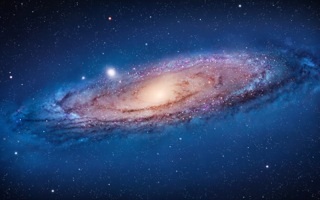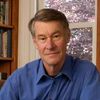This is the 2nd in the series "Religion and Science: A Beautiful Friendship."
 My parents were not church-goers, but they thought their children should be exposed to the religious perspective. So, until we graduated from eighth grade, they made my brothers and me attend a Presbyterian Sunday School.
My parents were not church-goers, but they thought their children should be exposed to the religious perspective. So, until we graduated from eighth grade, they made my brothers and me attend a Presbyterian Sunday School.
When I asked my Sunday School teacher how Jesus could turn a few fish and a little bread into enough food to feed a crowd, she explained it as a miracle. She gave the same answer about walking on water, raising Lazarus, and coming back from the dead. When I pressed her on the biblical account of creation --"He did all that in six days?" --she re-read Genesis to the class.
My other school, a public school in Chatham, New Jersey, was located in the shadow of Bell Laboratories, where my father worked. Bell Labs was then one of the top scientific research labs in the world.
In third grade we studied the solar system. Our textbook had a diagram of Copernicus's heliocentric model showing the planets revolving around the sun in circles. A table gave the distance of each planet from the sun in miles and its period of revolution in days: 365 for the earth, 225 for Venus, just 88 for Mercury, and so on, all the way out to Pluto. Printed alongside each planet's orbit was its average speed in miles per hour as it circled the sun.
It was just then that we were studying circles in arithmetic. The lesson for the week was that the circumference of a circle C = 2πR, where R is the circle's radius and π is a universal constant approximately equal to 3.14. A closeted nerd in the days before we had our own identity group, I decided to verify the speed shown for the orbiting earth using this formula. The computation was simple enough -- just form the product 2πR and divide by the time -- one year -- that it took the Earth to complete one revolution.
But something was wrong. My result did not agree with the Earth's speed in the book. It was not even close. So I tried the same calculation for Venus and Mercury. No agreement with those either. I did the other six planets. Not one of my calculations agreed with the numbers in the book. Frustrated, I asked my father for help. He checked my figures, examined the textbook, and announced the unthinkable: the book was wrong. I had thought books couldn't be wrong. We all had.
The next day I showed the error to my teacher, Mrs. Bahoosian. It made her nervous. She drew me aside and spoke in a hushed voice. I think she worried that if word got out it might cast doubt on the entire educational enterprise among my peers. But she mollified me by promising to write the publishing company.
Months later she reported that the publisher was going to change the numbers in the next edition. She never told the class. I remember checking a year later and sure enough the mistakes had been corrected.
Catching that mistake broke the spell of the printed word, and a new notion of truth took hold of me: the truth is not necessarily what some authority says it is, but rather what can be proven.
But, if so, where did that leave the truths taught in my Sunday School? Some of what was taught there contradicted our science lessons. It seemed my two schools stood for two incompatible worlds: science and religion.
People hadn't always had to face this dilemma. For millennia, science and religion were not regarded as distinct. Religion offered explanations of life and the cosmos, and for a long time there was scant evidence to contradict them.
However, bit by bit, evidence contradicting the religious explanations was gathered and, by the 17th century, battle lines were forming. A more evidence-based way of pursuing truth was taking shape within the religious consensus, and sometimes the findings of those who insisted on seeing for themselves threatened the doctrine espoused by church leaders.
Science cited facts, made predictions, and tolerated dissent. In contrast, religion invoked scripture, urged faith, and required conformity. Science said, "Doubt me." Religion said, "Trust me."
As a child, I couldn't make peace between my Sunday School and my grade school, so I took the easy way out. I dismissed religion as unfounded and resolved to ignore it. With hardly a backward glance, I set my sights on a career in math and physics where I was encouraged to question authority.
But I did not go away empty-handed. On the contrary, I took with me a pair of questions that, in time, would shape my life's work. Those questions are posed in the next post; my answers later, once some misconceptions about science and religion have been cleared up.
